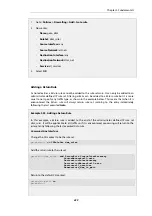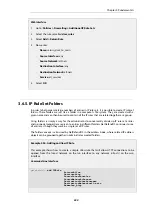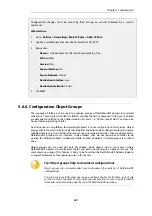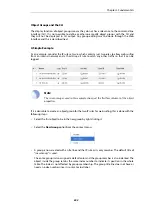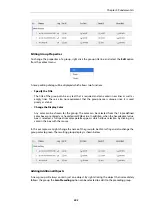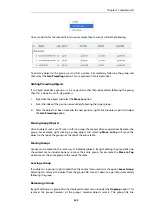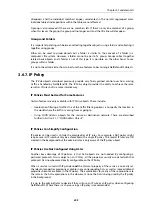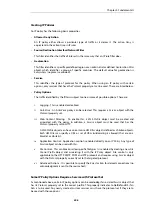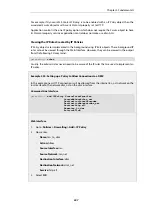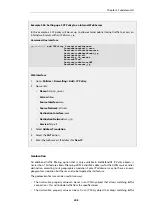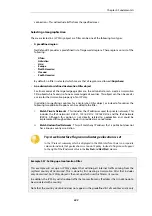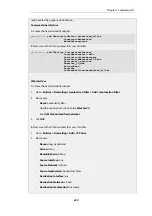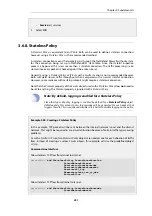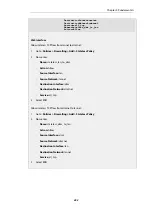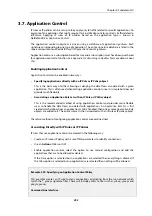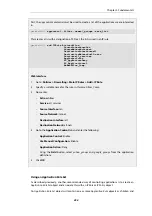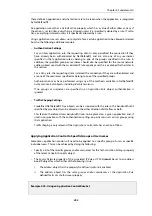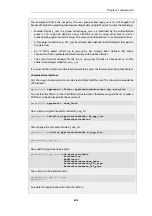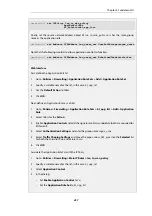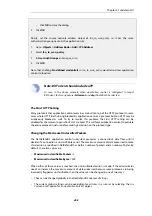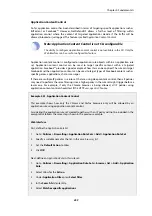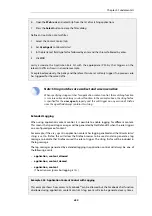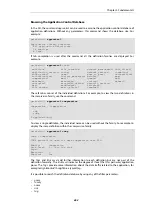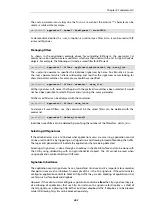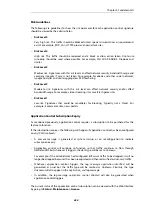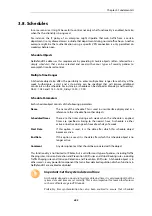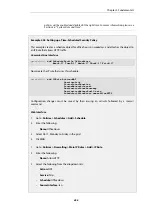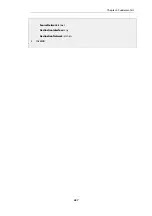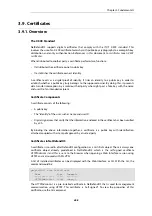
3.7. Application Control
IP rules or IP policies can be set up so they apply only to traffic related to specific applications. An
example of an application that might require this kind of administrator control is traffic related to
BitTorrent
. Applying IP rules or IP policies based on the application type is known in
NetDefendOS as
Application Control
.
The application control subsystem is driven using a database of application
signatures
. Each
signature corresponding to one type of application. The entire signature database is listed in the
separate document entitled
NetDefendOS Application Control Signatures
.
Application control is a subscription based feature and a subscription must have been purchased
for application control to function. See
Appendix A, Subscribing to Updates
for more details about
this.
Enabling Application Control
Application Control
can be enabled in two ways:
•
Specifying applications directly with an IP Rule or IP Policy object.
This is the basic way of either allowing or denying the data flows associated with a given
application. This is often used when testing application control since it is simple but does not
provide much flexibility.
•
Associating an Application Rule Set with an IP Rule or IP Policy object.
This is the recommended method of using application control and provides more flexible
ways to handle the data flows associated with applications. An
Application Rule Set
is first
created which defines how an application is to be handled, then one or more
Application Rule
objects are added to it. The entire rule set is then associated with an IP rule or IP policy object
These two methods of configuring application control are examined next.
Associating Directly with IP Rules or IP Policies
IP rules that use application control are created in the following way:
•
Create an IP rule or IP policy with a set of filter parameters to identify connections.
•
Use an Action of
Allow
or
NAT
.
•
Enable application control, select the option to use manual configuration and add the
applications that are to be allowed or denied.
If the
Deny
option is selected but no applications are selected then everything is allowed. If
the
Allow
option is selected but no applications are selected then nothing will be allowed.
Example 3.39. Specifying an Application Control Policy
This example creates an IP rule to deny connections originating from the
lan
network which
match the
*_groups
signature filter. These will include access to sites such as
yahoo_groups
and
google_groups
.
Command-Line Interface
Chapter 3: Fundamentals
253
Summary of Contents for NetDefendOS
Page 30: ...Figure 1 3 Packet Flow Schematic Part III Chapter 1 NetDefendOS Overview 30 ...
Page 32: ...Chapter 1 NetDefendOS Overview 32 ...
Page 144: ...Chapter 2 Management and Maintenance 144 ...
Page 284: ...Chapter 3 Fundamentals 284 ...
Page 392: ...Chapter 4 Routing 392 ...
Page 419: ... Host 2001 DB8 1 MAC 00 90 12 13 14 15 5 Click OK Chapter 5 DHCP Services 419 ...
Page 420: ...Chapter 5 DHCP Services 420 ...
Page 573: ...Chapter 6 Security Mechanisms 573 ...
Page 607: ...Chapter 7 Address Translation 607 ...
Page 666: ...Chapter 8 User Authentication 666 ...
Page 775: ...Chapter 9 VPN 775 ...
Page 819: ...Chapter 10 Traffic Management 819 ...
Page 842: ...Chapter 11 High Availability 842 ...
Page 866: ...Default Enabled Chapter 13 Advanced Settings 866 ...
Page 879: ...Chapter 13 Advanced Settings 879 ...

